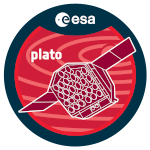The chemical transport mechanisms are key ingredients in stellar evolution. However, the computation of stellar models, used to characterize stars, often includes a simple atomic diffusion treatment, ignoring other additional processes, like the radiative accelerations. This is mainly due to their high computational costs. But this approximation should not be applied to F-type stars because of the large surface depletion of chemical elements that the use of the gravitational settling only would induce.
With the incoming data from PLATO, the incomplete physics in stellar models would prevent us from extending the requirements imposed by this mission for G-type stars to hotter types, specifically in terms of accuracy in age and mass. Hence, it is fundamental to include other competing transport processes for a better characterization of such stars.
In this talk, we present an efficient way to overcome this issue in stellar models. First, we show how to avoid the over-variations of surface abundances by introducing a turbulent mixing coefficient that can reproduce the effects of extra chemical transport processes, including radiative accelerations, parametrized on the surface iron abundance. Secondly, we will show the results of the implementation of a more efficient way to compute radiative accelerations by using the Single-Valued Parameter (SVP) approximation in MESA. As a test, we present the impact of our prescriptions on the characterization of Kepler stars.
With our work we manage to retrieve the surface chemical abundances of many elements, mimicking also the effect of radial acceleration in its complete implementation. This development allows a fast computation of a large number of stellar models including these processes, permitting us to produce more accurately the stellar fundamental properties (especially the ages) for F-type and hotter stars. The methods we present here can be adapted to any stellar evolution code selected to compute the grids used in the PLATO pipeline.

 PDF version
PDF version
